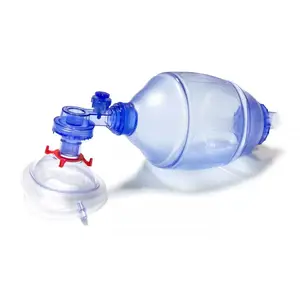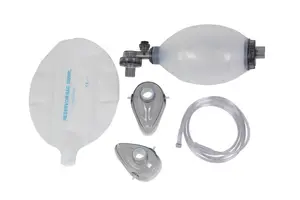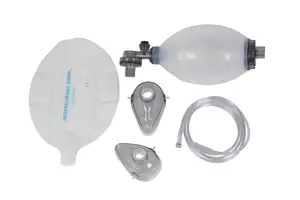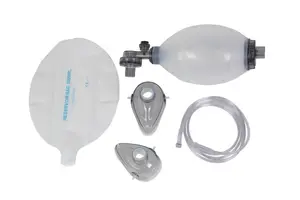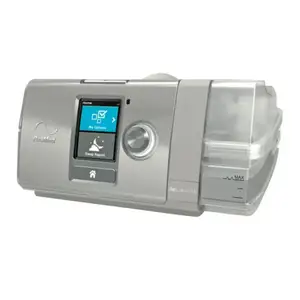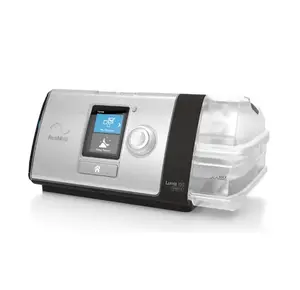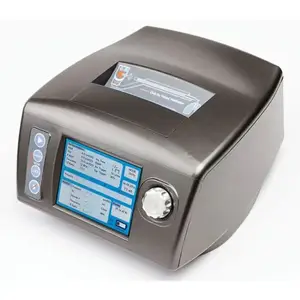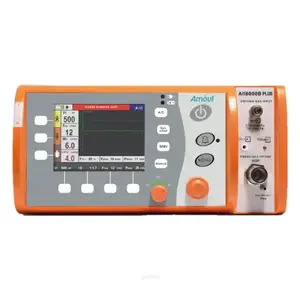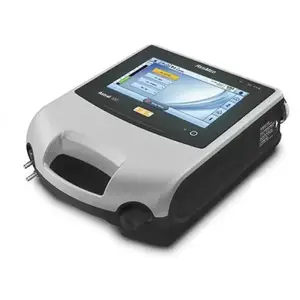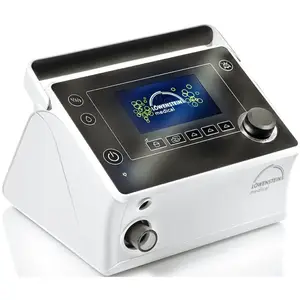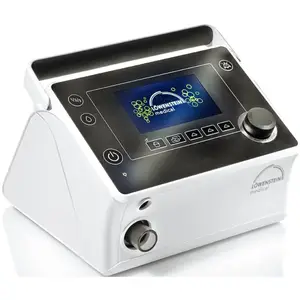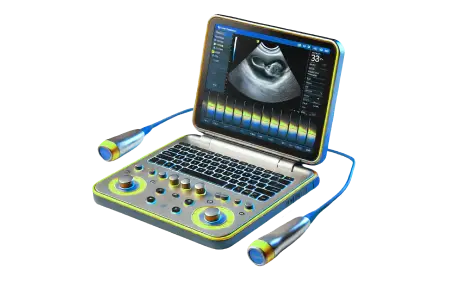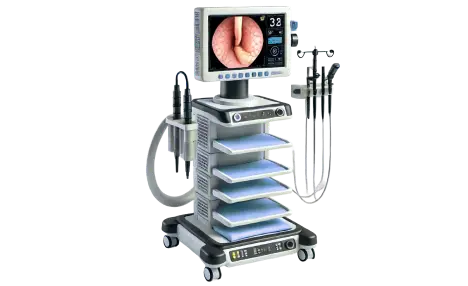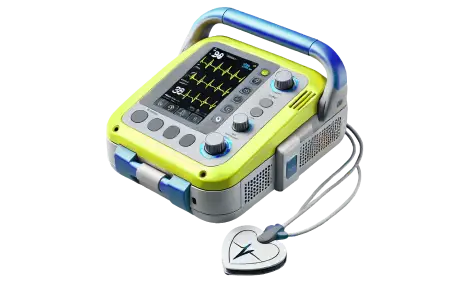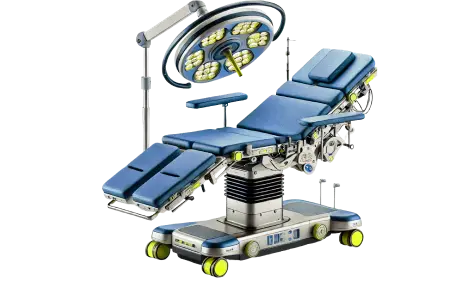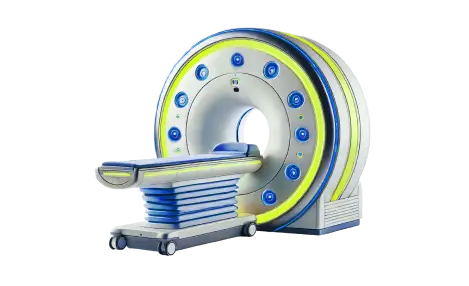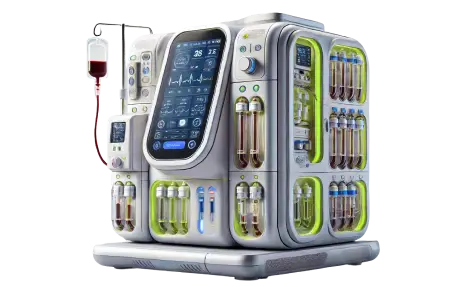0 800 33 09 39Information service
Ventilators
54 productsA ventilator is a life support system designed to support the respiratory mechanism by artificial means, subject to full control of medical personnel. The equipment maintains the proper level of gas exchange by supplying oxygen and removing carbon dioxide. Lung ventilators are used in the departments of surgery, anesthesiology and intensive care, as well as in emergency care.
How the ventilator works
A ventilator consists of three main functional units:
- control
- breathing; and
- oxygen supply.
Through the circuit, a system of elastic tubes, the breathing mixture enters the lungs.
The ventilator performs the natural muscle work of the diaphragm and intercostal muscles. As a result, other body tissues receive more oxygen, which improves their functioning.
The principle of operation can be compared to inflating a balloon. The ventilator produces a pressure above atmospheric pressure, i.e. positive with a certain concentration of oxygen (depending on the specifics of the disease). This causes the air to move into the chest cavity, creates a positive pressure in the pleural cavity and causes a "breath".
With the help of a digital tracking system and personalized settings, the sensor records triggers and determines when to start inhaling. Therefore, the delivery corresponds to the individual frequency of inhalations and exhalations (inspiration and expiration) - the number of breaths per minute (bpm).
The principle of operation can be compared to inflating a balloon. The ventilator produces a pressure above atmospheric pressure, i.e. positive with a certain concentration of oxygen (depending on the specifics of the disease). This causes the air to move into the chest cavity, creates a positive pressure in the pleural cavity and causes a "breath".
With the help of a digital tracking system and personalized settings, the sensor records triggers and determines when to start inhaling. Therefore, the delivery corresponds to the individual frequency of inhalations and exhalations (inspiration and expiration) - the number of breaths per minute (bpm).
Use and operation
As part of intensive care equipment, artificial lung ventilation devices:
- Maintain normal gas exchange in the alveoli. The success of this process is determined by measuring the level of carbon dioxide in the arterial blood (RaCO₂).
- Saturate the blood with oxygen. The effectiveness of this process is monitored through the indicators RaO₂ and SpO₂.
The MediGo catalog contains mechanical ventilators. Mechanical ventilation is prescribed when a patient shows signs (based on the results of examination or tests) indicating an inability to breathe on their own or receive enough oxygen. They are necessary in the case of cardiopulmonary resuscitation (CPR), control of expiratory airway closure (EAC), acute hypoxemic or hypercapnic respiratory failure, respiratory support for newborns and infants, etc.
Types of ventilators
To choose the most productive ventilator that meets the requirements of the clinic, pay attention to the following parameters.
By the method of connection
- Non-invasive. The equipment for mechanical ventilation is used only in cases when a person is fully conscious. The air enters the lungs with spontaneous breathing through a mask that fits over the mouth and nose or over the nose separately.
- Invasive. It is carried out through orthotracheal or nasotracheal intubation. The entire respiratory process is performed by the device.
By age category
- For adults and children over 6 years of age, it provides a breathing volume of 100 ml to 2000 ml and has different ventilation modes.
- Pediatric is intended for children under 6 years of age. It has a smaller breathing volume (from 20 ml to 300 ml) and special modes to support breathing.
- Neonatal is designed specifically for newborns and premature infants with very small breathing volumes (2 ml to 100 ml) and high trigger sensitivity.
By installation method
- Stationary. They are connected to the hospital gas and power supply system. They allow for long-term respiratory support with fine-tuning of ventilation parameters.
- Mobile (portable). They operate on batteries and are independent of stationary gas supply systems. For example, CWH ventilators operate autonomously for up to 6 hours. They are used during patient transportation, in ambulances, in the field, etc.
Interface and basic modes of ventilators
The user interface helps medical staff enter and monitor minute volume (MV), tidal volume (V), respiratory rate (RR), flow, and pressure. Their combinations combine several modes:
- PSV - self-contained breathing with pressure support. It is easy to use and well tolerated by patients. The main setting is the amount of support pressure, but also important are the respiratory volume, frequency, and RV.
- CMV is a traditional volume-controlled mode. It is present on all devices. To select and adjust it, you need to set the respiratory volume and respiratory rate. There are also 2 additional settings: the level of peak inspiratory breathing and the duration of the inspiratory pause.
- CMV-PC - ventilation with pressure control during each breath. The peak pressure, respiratory rate, inspiratory/exhalation ratio, and inspiratory time are set.
- SIMV - forced assisted ventilation. Synchronizes spontaneous and controlled breaths. To set up, you need frequency, pressure support (PS), and trigger sensitivity.
The price of a ventilator also varies depending on the number of modes and functions.
Benefits of buying a ventilator from Medigo
Medigo.com.ua offers to buy ventilators manufactured using modern technologies with automated settings to optimize performance. We guarantee the reliability and safety of the offered products. All equipment has the necessary quality certificates and registration certificates.
You also get a full range of warranty and post-warranty service from certified specialists of the company. Order your goods in a couple of clicks and choose a convenient way to receive them - delivery by courier, Nova Poshta, or pickup.
FAQ
What are the types of ventilators?
There are invasive ventilators with endotracheal intubation and non-invasive ventilators with a mask.
How much does a ventilator cost?
At MediGo, the prices for ventilators start at UAH 166,750.
Where to buy a ventilator?
MediGo offers to buy ventilators manufactured using modern technologies with automated settings to optimize performance.


